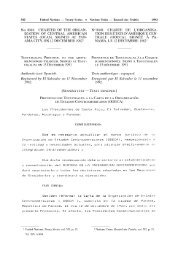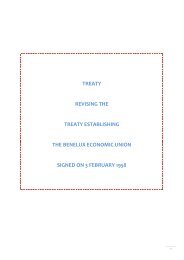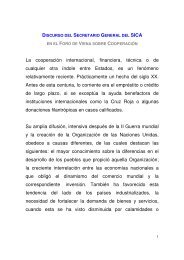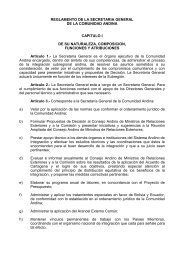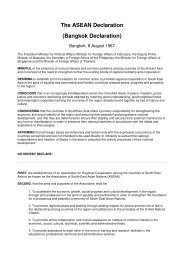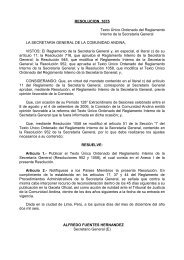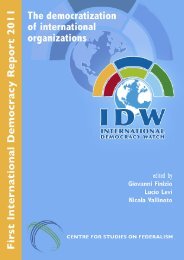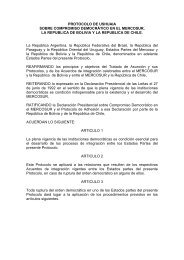Korwa G. Adar - International Democracy Watch
Korwa G. Adar - International Democracy Watch
Korwa G. Adar - International Democracy Watch
Create successful ePaper yourself
Turn your PDF publications into a flip-book with our unique Google optimized e-Paper software.
East African Community – <strong>Korwa</strong> G. <strong>Adar</strong>region (Schmidt 2004). Burundi and Rwanda became fully fledged member states of theEAC II following their ratification of the treaty in 2006 (Mushega 2006: 19).2. Part one2.1. The EAHC and the EACLA: governance structures and legislative powersThe debate on the question of cooperation in the East African region at the timeacquired three pronged and competing viewpoints namely, economic cooperation,political cooperation, and decolonization advocated mainly by the Governors, thesettlers, and African nationalists respectively. For Africans, the issue of de-colonizationwas more critical than securing appointments to serve in the LEGCO. The EAHCconsisted of the Governors of the three colonies, Kenya, Tanzania and Uganda, with anAdministrator, Commissioner for Transport, Finance member, and PostmasterGeneral as its principal executive officers. The EACLA, on the other hand, comprisedof seven ex-officio members, three nominated official members, and thirteen unofficialmembers respectively (Delupis 1970: 27-28). Even though the EACLA or LEGCO wasthe legislative body, it had limited powers. Prior to tabling them in the LEGCO fordebate, for example, the bills were subjected to scrutiny by the three Governors andcould be vetoed by the EAHC, making the latter body “the supreme organ of theorganization” (Delupis 1970: 29). What is important to note is that the Acts of theAssembly once assented to by the EAHC had the force of laws within the region. Thiswas an important development at the time given that the laws were applicable to allthe three territories. However, the direct linkage of the three colonial territories withBritain making them objects of <strong>International</strong> Law undermined the autonomy of theEAHC as a legitimate international organization. 32.2. EACSO governance structures, operational and structural powersThe EACSO was transformed in 1961 with a view to accommodating the East Africanpresidents to replace the Governors once the territories acquired their sovereignty.The EACSO had three main organs namely, the East African Authority, the CentralLegislative Assembly, and the Triumvirates. The East African Authority, the supreme3The EACH was responsible for more than 30 common services, most of which had their Headquartersin Nairobi, Kenya (Delupis 1970).




